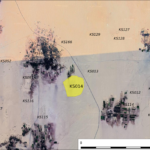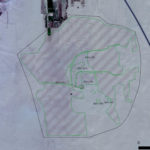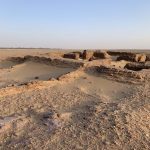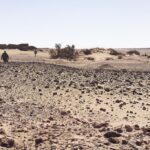ʿAYN AL-WĀQIFA (PEGE SYKAMINEIA)
| Greek | Πηγὴ Συκαμίνεια |
| Arabic | عين الواقفة |
| English | Ain Waqfa |
| French | Aïn Waqfa |
| DEChriM ID | 36 |
| Trismegistos GeoID | 2730 |
| Pleiades ID | 776214 | PAThs ID | - |
| Ancient name | Pege Sykamineia |
| Modern name | ʿAyn al-Wāqifa |
| Latitude | 24.548282 |
| Longitude | 30.620162 |
| Date from | - |
| Date to | 380 |
| Typology | Village |
| Dating criteria | Analysis of surface ceramic; palaeography and prosopography of O.Waqfa. |
| Description | ʿAyn al-Wāqifa (lit. "the dried-out well") is located 10km W/S-W of Dūš, and 16km S of Bārīs (Ghica 2012: 215; Wagner 1987: 186). The site, which consists of a few dozen structures levelled by the elements, is dated by the surface ceramic between the first and the fifth centuries CE, although one sector of the site (KS014LA) presents traces of palaeolithic occupation (http://4care-skos.mf.no/skos/195/). The ostraca found during the excavations carried out on the site provide, however, a clearer picture of the last occupation, at least in the excavated area. While the editors of O.Waqfa (Wagner 1987: 186; Cuvigny, Hussein and Wagner 1993: 12, 15) had already pointed in this direction, the prosopography, which denotes an organic connection between O.Waqfa and O.Douch, suggests that the former are to be dated – as the latter – in the 370s-380s. Earlier foundations underneath House D, where most of these ostraca were found, however, are much thicker than the walls of the current structure, implying the existence of an earlier building (Cuvigny, Hussein and Wagner 1993: 13). As mentioned above, the ceramic assemblages have a fairly wide chronological range, from the first to the fifth centuries AD, with the highest concentration in the fourth and fifth centuries (Ghica 2012: 216). Located at the intersection between the Darb al-Arbaʿīn and the Darb al-Dūš, the village is suggested to have perhaps been a checkpoint on the caravan route leading to Darfur, in western Sudan (Cuvigny, Hussein and Wagner 1993: 11). Four houses, designated Houses A, B, G and D, were uncovered in the first season of excavation, as well as a number of artefacts, including 85 ostraca (82 Greek and 3 Coptic), ceramic assemblages, terracotta oil lamps, 10 pieces of wood with Greek inscriptions, bronze coins, and a number of small fragments of Greek papyrus (Cuvigny, Hussein and Wagner 1993: 14). These ostraca are of particular importance, providing details regarding land-use, the army, the village’s close connections with Dūš (ancient Kysis), as well as the Christian presence in the village. This last factor is indicated by the mention of three priests, who are presented as taxpayers or intermediaries, engaged in agricultural activities (Cuvigny, Hussein and Wagner 1993: 17, 26 and 27). Additional indicators of Christianity can be seen through a series of typically Christian anthroponyms (Ghica 2012: 216). |
| Archaeological research | The only archaeological research to have been conducted at the site was two seasons of excavation carried out by the Supreme Council of Antiquities (SCA), in 1986 and 1988-89. A brief summary of the first season accompanies the edition of ostraca, authored by H. Cuvigny, A. Hussein and G. Wagner (1993: 11-14). |
• Cuvigny, H., A. Hussein and G. Wagner. 1993. Les ostraca grecs d'Aïn Waqfa (Oasis de Kharga). Cairo: Institut français d'archéologie orientale.
• Gascou, J. and G. Wagner. 1979. ”Deux voyages archéologiques dans l’Oasis de Khargeh.” Bulletin de l’Institut français d'archéologie orientale 79: 10.
• Ghica, V. 2012. “Pour une histoire du christianisme dans le Désert occidental d’Égypte.” Journal des savants 2: 189-280.
• Ghica, V. 2016. “Vecteurs de la christianisation de l’Egypte au IVe siècle à la lumière des sources archéologiques.” In Acta XVI Congressus Internationalis Archaeologiae Christianae, Rome 22-28.9.2013, edited by O. Brandt and G. Castiglia, 240. Città del Vaticano: Pontificio Istituto di Archeologia Cristiana.
• Wagner, G. 1987. Les Oasis d’Égypte à l’époque grecque, romaine et byzantine d’après les documents grecs: Recherches de papyrologie et d’épigraphie grecques, 186. Cairo: Institut français d’archéologie orientale.


 Json data
Json data











